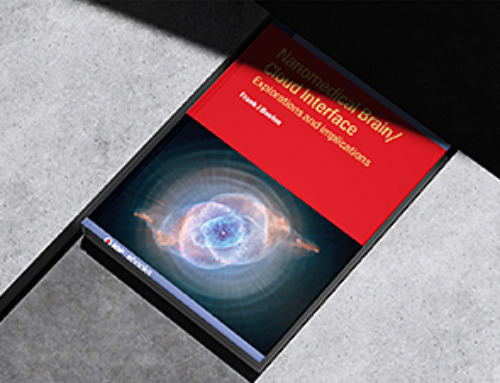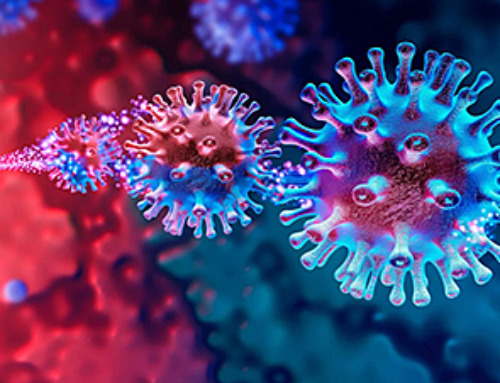The incorporation of exotic DNA from wild relatives into wheat results in a remarkable yield increase of up to 50%, even in hot weather, surpassing elite lines without these genes.
Amid a year of record-breaking temperatures, research from the Earlham Institute in Norwich and the International Maize and Wheat Improvement Centre (CIMMYT) provides much-needed hope for enhancing crop resilience and securing food in the face of a changing climate.
The field trials in Mexico also emphasize the importance of genetic diversity in key crops, where decades of selective breeding have reduced their ability to adapt to a rapidly warming planet.
Wheat provides more global calories than any other crop yet most of the wheat grown around the world has limited genetic variation, making it vulnerable to the impacts of climate change.
“Wheat is responsible for around 20 percent of the calories consumed globally and is widely grown all over the world,” says Professor Anthony Hall, study author and Group Leader at the Earlham Institute. “But we don’t know whether the crops we’re planting today will be able to cope with tomorrow’s weather.
“To make matters worse, developing new varieties can take a decade or more so acting quickly is vital.”
In collaboration with CIMMYT, Earlham Institute researchers set up a two-year field trial in Mexico’s Sonora desert. They studied 149 wheat lines, ranging from widely-used elite lines to those selectively bred to include DNA from wild relatives and landraces from Mexico and India.
“Crossing elite lines with exotic material has its challenges,” said Matthew Reynolds, co-author of the study and leader of Wheat Physiology at CIMMYT.
“There’s a well-recognized risk of bringing in more undesirable than desirable traits, so this result represents a significant breakthrough in overcoming that barrier and the continued utilization of genetic resources to boost climate resilience.”
The seeds were sown later in the season to force the plants to grow during hotter months, putting these crops under the kind of heat stress that is predicted to become the norm as global temperatures rise.
They found the plants bred with exotic DNA achieved a 50 percent higher yield over wheat without this DNA. Importantly, the exotic lines didn’t perform any worse than the elite lines under normal conditions.
The researchers sequenced the plants to locate specific genetic differences responsible for the increased heat tolerance. They identified genetic markers that could allow the targeted introduction of this beneficial exotic DNA into elite lines, offering a quick way to improve climate resilience and mitigate against widespread crop failures.
Benedict Coombes, study author and Ph.D. student at the Earlham Institute, said: “As we try to produce more food from less land to feed a growing global population, we urgently need to future-proof the crops we’re planting so they can thrive in an increasingly hostile climate.
“The key to this, we are increasingly finding, may lie within largely untapped genetic resources from wheat’s wild relatives and landraces.”
The researchers suggest breeding programs incorporate the heat tolerance traits as a pre-emptive strategy to produce wheat crops that can cope with a less predictable climate.
“This is science we can now use to make an impact almost immediately,” added Professor Hall. “We’ve done the field trials, we know what genetic markers we’re looking for, and we’re starting conversations with wheat breeders so this is hopefully going to be the first of many steps to contribute to global food security in the coming years.
“The discoveries we’re making, and the action we’re taking, will hopefully mean people around the world can continue to have nutritious food on their plates.”
News
Molecular Manufacturing: The Future of Nanomedicine – New book from Frank Boehm
This book explores the revolutionary potential of atomically precise manufacturing technologies to transform global healthcare, as well as practically every other sector across society. This forward-thinking volume examines how envisaged Factory@Home systems might enable the cost-effective [...]
New Book! NanoMedical Brain/Cloud Interface – Explorations and Implications
New book from Frank Boehm, NanoappsMedical Inc Founder: This book explores the future hypothetical possibility that the cerebral cortex of the human brain might be seamlessly, safely, and securely connected with the Cloud via [...]
Global Health Care Equivalency in the Age of Nanotechnology, Nanomedicine and Artificial Intelligence
A new book by Frank Boehm, NanoappsMedical Inc. Founder. This groundbreaking volume explores the vision of a Global Health Care Equivalency (GHCE) system powered by artificial intelligence and quantum computing technologies, operating on secure [...]
Miller School Researchers Pioneer Nanovanilloid-Based Brain Cooling for Traumatic Injury
A multidisciplinary team at the University of Miami Miller School of Medicine has developed a breakthrough nanodrug platform that may prove beneficial for rapid, targeted therapeutic hypothermia after traumatic brain injury (TBI). Their work, published in ACS [...]
COVID-19 still claims more than 100,000 US lives each year
Centers for Disease Control and Prevention researchers report national estimates of 43.6 million COVID-19-associated illnesses and 101,300 deaths in the US during October 2022 to September 2023, plus 33.0 million illnesses and 100,800 deaths [...]
Nanomedicine in 2026: Experts Predict the Year Ahead
Progress in nanomedicine is almost as fast as the science is small. Over the last year, we've seen an abundance of headlines covering medical R&D at the nanoscale: polymer-coated nanoparticles targeting ovarian cancer, Albumin recruiting nanoparticles for [...]
Lipid nanoparticles could unlock access for millions of autoimmune patients
Capstan Therapeutics scientists demonstrate that lipid nanoparticles can engineer CAR T cells within the body without laboratory cell manufacturing and ex vivo expansion. The method using targeted lipid nanoparticles (tLNPs) is designed to deliver [...]
The Brain’s Strange Way of Computing Could Explain Consciousness
Consciousness may emerge not from code, but from the way living brains physically compute. Discussions about consciousness often stall between two deeply rooted viewpoints. One is computational functionalism, which holds that cognition can be [...]
First breathing ‘lung-on-chip’ developed using genetically identical cells
Researchers at the Francis Crick Institute and AlveoliX have developed the first human lung-on-chip model using stem cells taken from only one person. These chips simulate breathing motions and lung disease in an individual, [...]
Cell Membranes May Act Like Tiny Power Generators
Living cells may generate electricity through the natural motion of their membranes. These fast electrical signals could play a role in how cells communicate and sense their surroundings. Scientists have proposed a new theoretical [...]
This Viral RNA Structure Could Lead to a Universal Antiviral Drug
Researchers identify a shared RNA-protein interaction that could lead to broad-spectrum antiviral treatments for enteroviruses. A new study from the University of Maryland, Baltimore County (UMBC), published in Nature Communications, explains how enteroviruses begin reproducing [...]
New study suggests a way to rejuvenate the immune system
Stimulating the liver to produce some of the signals of the thymus can reverse age-related declines in T-cell populations and enhance response to vaccination. As people age, their immune system function declines. T cell [...]
Nerve Damage Can Disrupt Immunity Across the Entire Body
A single nerve injury can quietly reshape the immune system across the entire body. Preclinical research from McGill University suggests that nerve injuries may lead to long-lasting changes in the immune system, and these [...]
Fake Science Is Growing Faster Than Legitimate Research, New Study Warns
New research reveals organized networks linking paper mills, intermediaries, and compromised academic journals Organized scientific fraud is becoming increasingly common, ranging from fabricated research to the buying and selling of authorship and citations, according [...]
Scientists Unlock a New Way to Hear the Brain’s Hidden Language
Scientists can finally hear the brain’s quietest messages—unlocking the hidden code behind how neurons think, decide, and remember. Scientists have created a new protein that can capture the incoming chemical signals received by brain [...]
Does being infected or vaccinated first influence COVID-19 immunity?
A new study analyzing the immune response to COVID-19 in a Catalan cohort of health workers sheds light on an important question: does it matter whether a person was first infected or first vaccinated? [...]





















